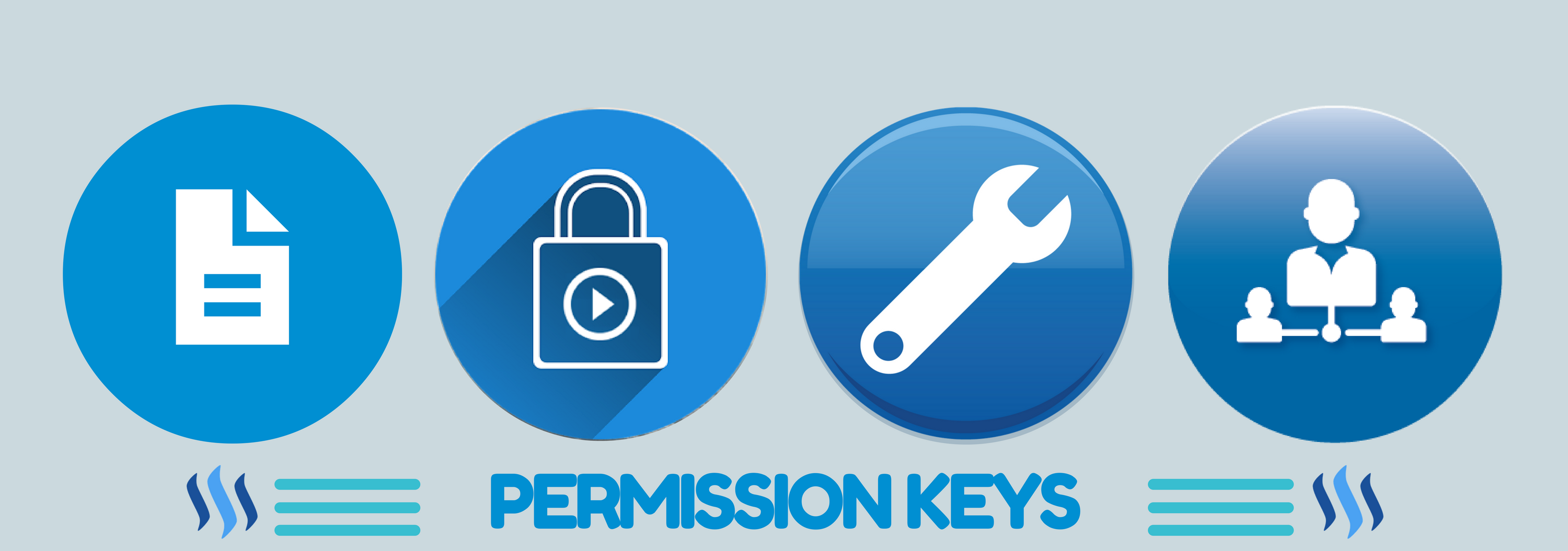Welcome to Lesson 4!
I'm really glad this Steemit Lesson helped a couple of Steemians (new and old) which gives me more drive to do more of this in the near future. As my goal to educate the users about the important topics in Steemit that existing/new users needs to know, I welcome you guys to Steemit Lesson 4! In case you missed the previous lessons, feel free to smash the links below.
Steemit Lesson 1 : The Best Way to Power-up Your SBDs
Steemit Lesson 2 : What are Cryptocurrencies? Blockchain?
Steemit Lesson 3 : How Do We Transfer Our Tokens from Our Wallet? A Guide to Account Transfers

Design credits : @rayhan97
In the online world, most especially in the cryptoworld - "Account Password" is one of the most critical matters that a user needs to be careful of. One another user gets that, your account is at risk. So you need to be careful managing and storing your passwords.
Let's Talk About Steemit Generated Keys/Password
In a normal Steemit account, Steemit provides us four different keys or passwords. These keys are important and often termed as Permissions in Steemit. Every key performs a specific functions and limits. Yes, I'm talking about :
"Owner , Active, Posting, and Memo Keys"
Allow me to provide you a table that summarizes the Permissions each key is entitled to. Literally, there are some keys that cannot perform specific transactions because they are intended only to a specific role. Like Posting Key, where you cannot perform Account transfers nor changing your password.
| Transaction/s | Memo Key | Posting Key | Active Key | Owner Key |
|---|---|---|---|---|
| Post, vote, Comment, Follow | x | x | x | |
| Account Transfers | x | x | ||
| Make Trades (Internal Market) | x | x | ||
| Power Down/Up | x | x | ||
| Witness Voting | x | x | ||
| Changing your Owner Key | x | |||
| View Private Messages/Memos | x | x |
That summarizes the transactions allowed per key. Now let's try to define and tackle each of these permissions :

Design credit : @steemit-guides
Owner Key
Owner key gives you full access and control to your account. If you'll check again the summary table above, all of the things listed can be done using your Owner Key. Owner key is like you Master Password, that key gives you full control of everything. Therefore, you should be careful in giving this key. It should not be used actually. It should be kept confidentially. Keep your Owner key in an offline storage (Not connected to the internet).
Active Key
As you can see above, all of the transactions can be performed by Active Key except Changing your Owner Key. Therefore, this key should be used most of the times when you do transactions that cannot be done by Posting Key. As of its functions, please check on the table summary above. But in most cases like connecting to Steemvoter, Steemauto, Streemian, Utopian, Busy and even using Steemv2connect, or any third party apps that is connected to the Steem Blockchain, use Active Key.
Posting Key
This key should be mainly used when you login, because this is the safest and secured key for your account's risk. Posting Key only allows you to post, comment, vote, and follow users. Posting key cannot do account transfers/withdrawals (kindly look on the table). When the time comes that you need to perform account transfers or say you want to send a certain amount to a user, then use your Active Key.
Memo Key
Your Memo Key is your key to decrypt private messages sent to your account. I believe our Memo Key is also needed when we send SBD or Steem from Poloniex to our Steemit account. Though Memo Key doesn't have much purpose now. I believe this key is used to @arcange's SteemSQL new system.

That's It!
I hope this blog helped you in understanding Steemit's generated passwords. This will also help you in reducing the risk in your account. Don't forget to Smash that Upvote and Resteem button!. Steem On :)

Reference : @pfunk at A User's Guide to the Different Steem Keys or Passwords
